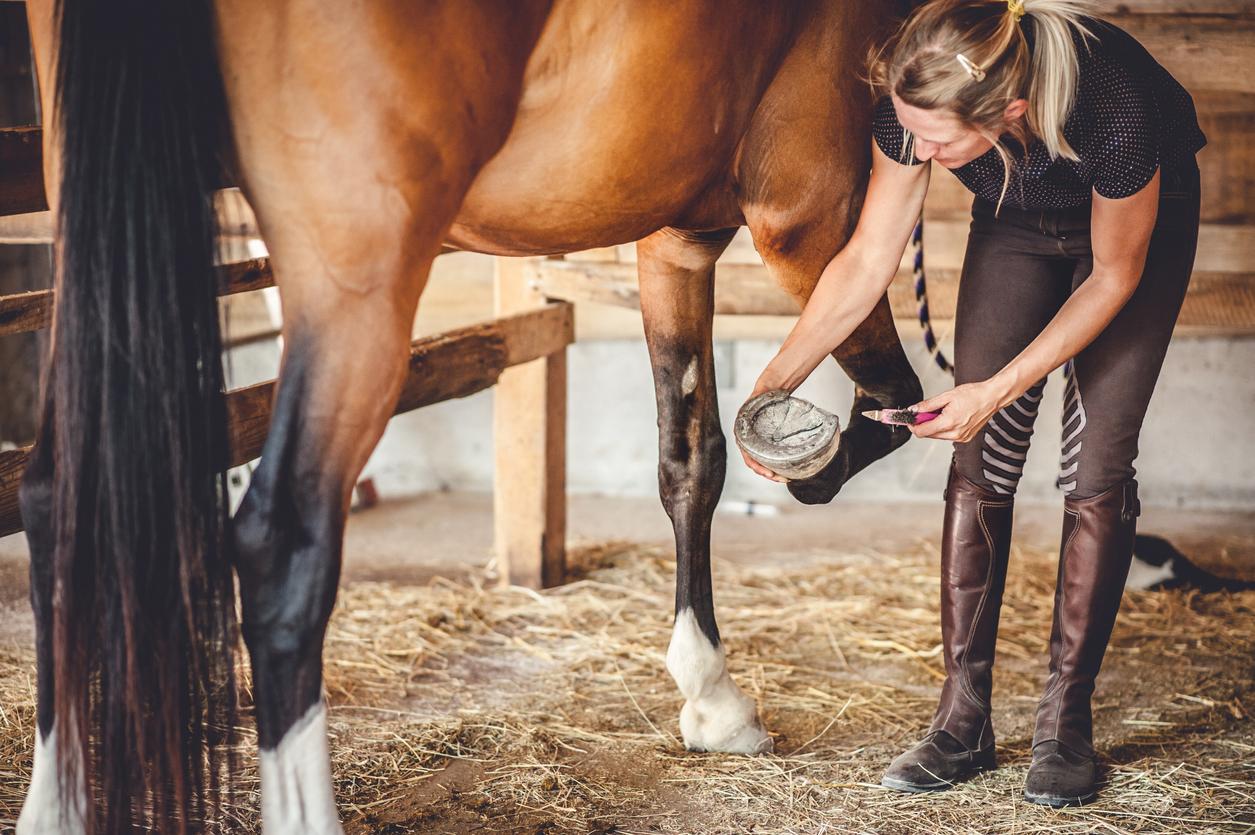Thrush can be a common issue for barefoot horses, causing discomfort and potential lameness if left untreated. It is essential for horse owners to have a solid understanding of how to effectively treat thrush and make necessary adjustments in their horse’s care routine.
By taking proactive measures and making modifications to the horse’s environment, diet, and hoof care practices, it is possible to successfully manage and prevent thrush in barefoot horses. In this article, we will explore the best strategies for treating thrush in barefoot horses and provide practical tips for maintaining healthy hooves.
Understanding Thrush in Barefoot Horses

Understanding thrush in barefoot horses is essential for proper care and treatment. Thrush is a common bacterial infection that affects the frog of a horse’s hoof, leading to a foul odor and discharge. In barefoot horses, thrush can develop more easily due to factors such as moisture and lack of proper trimming. It is important to regularly clean and dry the hooves to prevent thrush from developing or worsening.
Additionally, regular trimming and proper hoof care can help prevent thrush in barefoot horses. By understanding the causes and symptoms of thrush in barefoot horses, horse owners can take the necessary steps to treat and prevent this common hoof ailment.
Identifying and Diagnosing Thrush

Identifying and diagnosing thrush in barefoot horses can be a crucial step in providing proper care and treatment for this common hoof ailment. Thrush is characterized by a foul odor emanating from the hoof, along with a black, tar-like discharge in the frog area. Additionally, affected horses may exhibit lameness or sensitivity in their feet.
To accurately diagnose thrush, it is important to thoroughly clean the hooves and inspect for any signs of infection. In some cases, a veterinarian may need to be consulted for a definitive diagnosis and treatment plan. By promptly identifying and addressing thrush, horse owners can prevent further complications and discomfort for their barefoot equine companions.
Adjusting Care Practices for Treating Thrush

When treating thrush in barefoot horses, adjustments in care practices are essential to effectively address this common hoof ailment. Ensuring proper hygiene is crucial, as cleaning the hooves regularly and thoroughly can help prevent and treat thrush. Additionally, providing ample opportunity for the hooves to dry out can aid in combating the infection. Implementing a balanced diet rich in essential nutrients and minerals can also promote overall hoof health and resilience against thrush.
Regular exercise and movement can improve circulation and hoof function, contributing to a faster recovery from thrush. Consulting with a veterinarian or farrier for specific treatment recommendations tailored to the individual horses’ needs is also recommended. By making these adjustments in care practices, horse owners can successfully manage and treat thrush in barefoot horses.
Conclusion
In conclusion, treating thrush in barefoot horses requires specific adjustments in care to promote healing and prevent recurrence. Regular hoof maintenance, proper trimming, and appropriate turnout conditions are key factors in managing thrush. Additionally, using a high-quality hoof conditioner, such as Best Hoof Conditioner, can help strengthen the hoof and maintain optimal hoof health. By implementing these adjustments and providing proper care, horse owners can effectively address thrush and support their barefoot horses’ overall hoof health. Remember, early detection and consistent treatment are essential in managing thrush and ensuring the well-being of barefoot horses.





